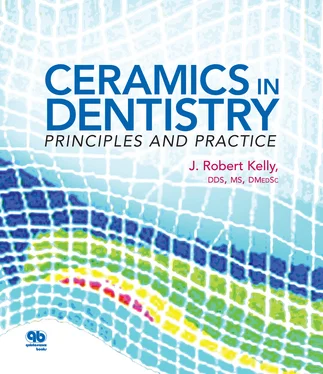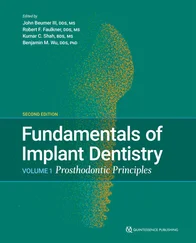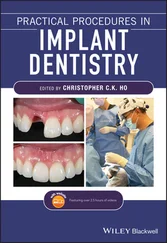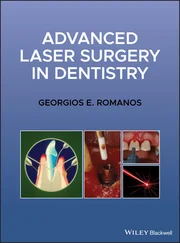References
1. Plumb JH. In the Light of History. New York: Delta, 1971:59–65.
2. Kingery WD, Vadiver PB. Ceramics Masterpieces: Art, Structure, and Technology. New York: Free Press, 1986.
3. Gleeson J. The Arcanum: The Extraordinary True Story. New York: Warner Books, 2000.
4. Ring ME. Dentistry: An Illustrated History. New York: Harry N. Abrams, 1985:108–211.
5. McLean JW. A higher strength porcelain for crown and bridge work. Br Dent J 1965;119:268–272.
6. McLean JW. The Development of Ceramic Oxide Reinforced Dental Porcelains with an Appraisal of Their Physical and Clinical Properties [thesis]. London: University of London, 1966.
7. Hasselman DPH, Fulrath RM. Proposed fracture theory of a dispersion-strengthened glass matrix. J Am Ceram Soc 1966;49:68–72.
8. Mörmann WH, Brandestini M. Cerec-System: Computerized inlays, onlays and veneers [in German]. Zahnarztl Mitt 1987;77:2400–2405.
Acknowledgment
Parts of this chapter were previously published in the Australian Dental Journal . They are reprinted here with permission.
2
Ceramics 101: What Is This Stuff Anyway?
Chapter Highlights
• Ceramics are oxides of metals such as silicon, aluminum, and zirconium.
• There are three basic categories of ceramics: glassy, particle-filled glasses, and polycrystalline.
• Esthetically, there are only two categories: pretty and ugly. Pretty ceramics are generally weak, while strong ceramics are generally opaque and ugly.
• Ceramics can be thought of as “composites”—that is, they contain two or more distinct phases. Glassy ceramics are filled for color and opacity control, while stronger ceramics are filled for strength.
• Strength is the stress at which something bad, like fracture, happens. Ceramics are much stronger under compression than under tension.
Ceramics as Anti-Metals
While ceramics are built from metal atoms (eg, silicon, aluminum, zirconium), ceramics are certainly not metals. In fact, ceramics are anti-metals. Whereas metals conduct heat and electricity, ceramics are insulators. Metals are shiny and opaque, whereas ceramics can be transparent, translucent, or semi-opaque. Ceramics can exquisitely mimic the optical properties of teeth and are extraordinarily stable chemically and biologically, whereas metals are highly unesthetic and notorious for corrosion. Ceramics are brittle, meaning they have high compressive strength but much lower tensile strength, whereas metals can be ductile and have high tensile strength. In the building of the Golden Gate Bridge between San Francisco and the Marin Headlands, it is no surprise that the suspension systems were made from high–tensile strength steel cabling and that the whole structure sits atop concrete pillars (a ceramic) anchored to bedrock (behaving like and often a source of ceramics).Likewise, in the first successful widespread use of ceramics in fixed prosthodontics, porcelain was supported by cast metal substructures for their high tensile strength (see chapter 5).

The two main cables of the Golden Gate Bridge were fabricated by spinning together individual steel wires over the length of the bridge.
Ceramics are oxides of metals such as silicon (Si), aluminum (Al), and zirconium (Zr). Unlike metallic bonding in which aluminum atoms bond to adjacent aluminum atoms (ie, Al-Al-Al), in metal oxide bonding little oxygen atoms (O) intersperse themselves between every metal atom (ie, Al-O-Al) with covalent and ionic bonds. These oxygen atoms do not allow the flow of electrons that is behind the heat flow and subsequent conduction of electricity. Those particularly interested in metallic versus metal oxide bonding will find an intriguing visual illustration at the link provided.
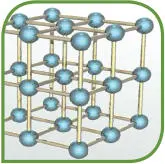
Adding oxygen atoms changes the nature of bonds and the properties of the material. In metal oxide bonding, atoms share “D shell” orbital electrons.
All of the properties of interest in both ceramics and metals arise from this difference in the nature of their bonds. Arrangements of metal and oxygen atoms in ceramics can be either quite regular (ie, crystalline) or not regular at all (ie, amorphous). In crystalline ceramics (eg, zirconia, alumina), adjacent and even next-neighboring atoms are at exactly the same angle and distance throughout the whole structure in a relatively dense arrangement. In amorphous (or glassy) ceramics, bond angles and distances between atoms are all over the map, resulting in a much less dense arrangement that is easier to drive a crack through. X-rays shining on crystalline materials are diffracted at such regular angles that diffraction patterns can be used to identify the material, whereas x-rays diffracted from glassy materials create a broad and featureless hump. Figure 2-1illustrates a crystalline structure and an amorphous feldspathic porcelain.
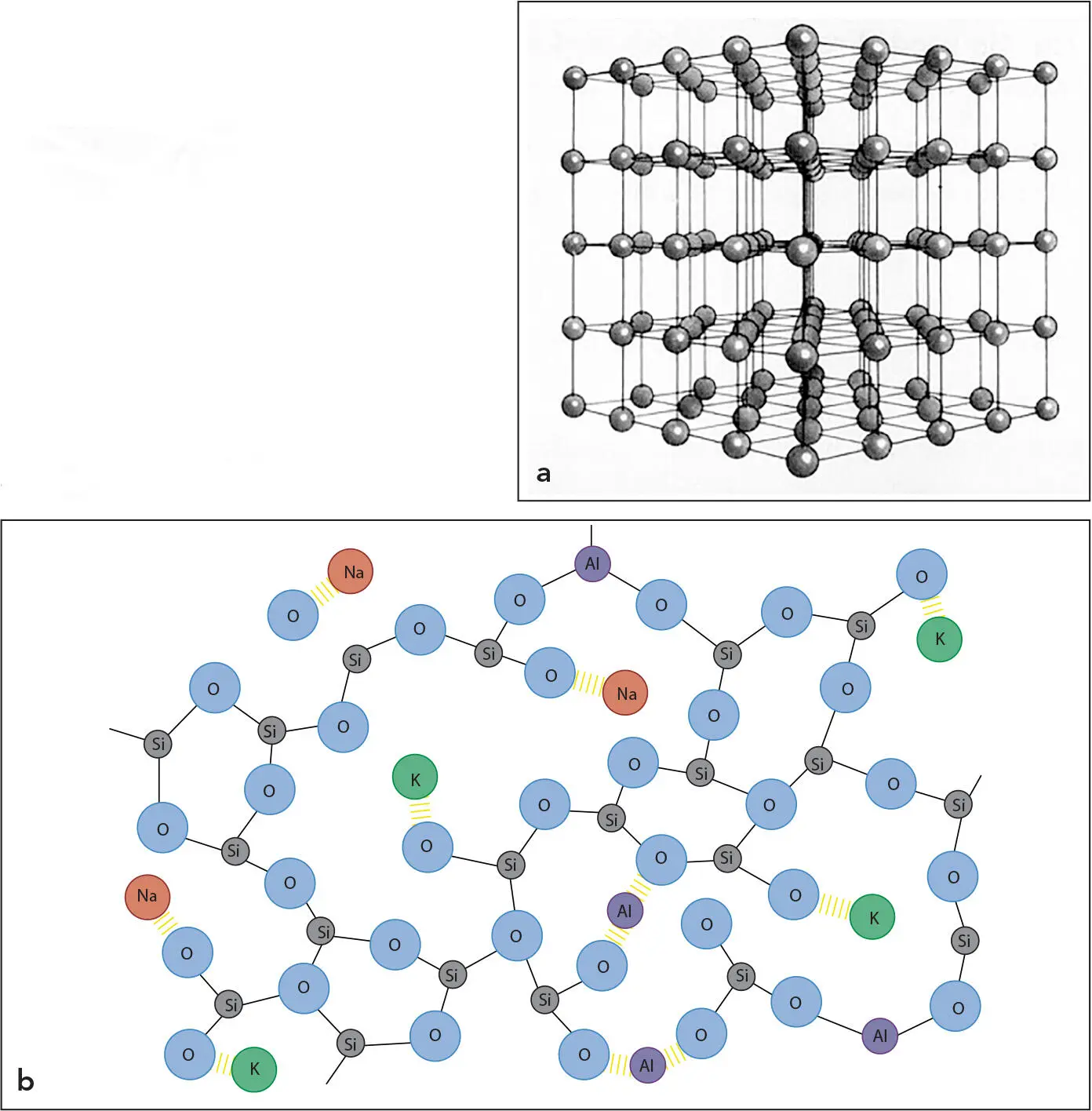
Fig 2-1 (a) In polycrystalline ceramics such as zirconia and alumina, metal and oxygen atoms are arranged in very regular relationships. Planes of atoms diffract x-rays in a manner that allows crystalline materials to be identified. (b) In feldspathic glasses, the three-dimensional network of bridges formed by silicon-oxygen-silicon bonds is broken up occasionally by modifying cations, such as sodium and potassium, that provide charge balance to nonbridging oxygen atoms.
Dental Ceramics Are Composites
There are two concepts that can help to demystify dental ceramics by providing a structure within which to organize thinking. First, there are only three main classes of dental ceramics: (1) predominantly glassy materials, (2) particle-filled glasses, and (3) polycrystalline ceramics containing no glass. Each class has defining characteristics ( Fig 2-2). Second, virtually any ceramic within this spectrum can be considered a “composite,” meaning that it has a composition of two or more distinct entities. Reviewed within the framework of these two concepts, seemingly different dental ceramics can be shown to be quite similar or closely related to each other. Additionally, the rationale behind the development of ceramics of both historical and recent interest can be more easily understood. Two examples of the utility of these concepts include these basic statements:
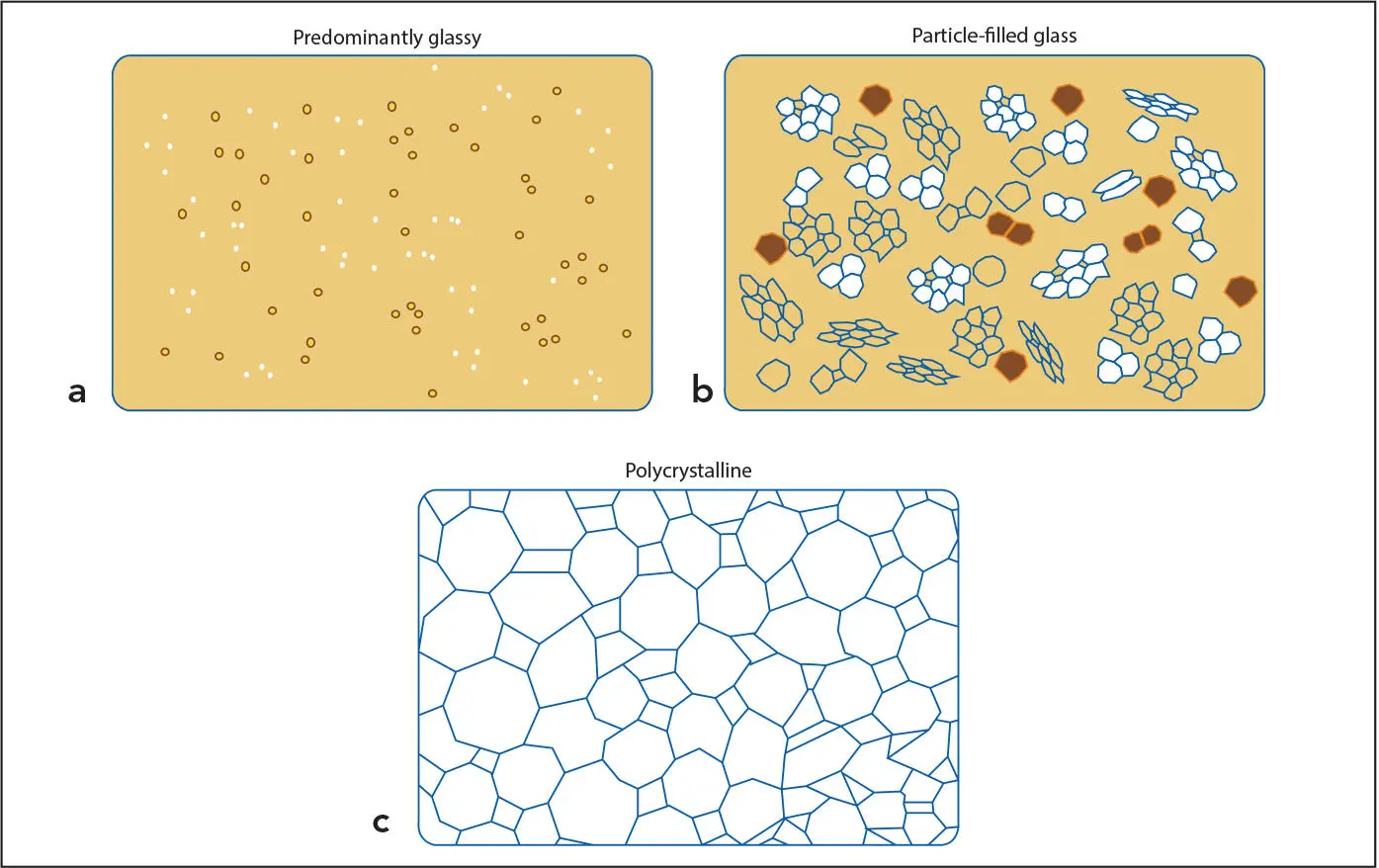
Fig 2-2Based on their microstructure, dental ceramics fall within three basic classes: (1) predominantly glassy (a) , (2) particle-filled glasses (b), and (3) fully polycrystalline (c) .
1. Highly esthetic dental ceramics are predominantly glassy, and higher-strength substructure ceramics are generally crystalline.
2. The development of substructure ceramics simply involved an increase in crystalline content from about 50% to fully polycrystalline.
Figure 2-3provides the basic composition details and commercial examples of many esthetic and substructure dental ceramics organized by class, illustrating this concept of ceramics as composites comprised of a matrix and fillers. While the term composite is often reserved in dentistry for resin-based composites, the concept of composite materials is widely applied to metal-based and ceramic-based materials in engineering materials science. For example, concrete is a composite of a hydraulic cement and “clinker,” which is essentially pebbles and sand. Virtually all materials are composites, meaning that they are made of two or more distinct components (phases) distinguished by differences in chemistry, crystalline habit, melting temperature, or other property. Each of these components is considered to be a “phase,” and components are separated by “phase boundaries.”
Читать дальше
